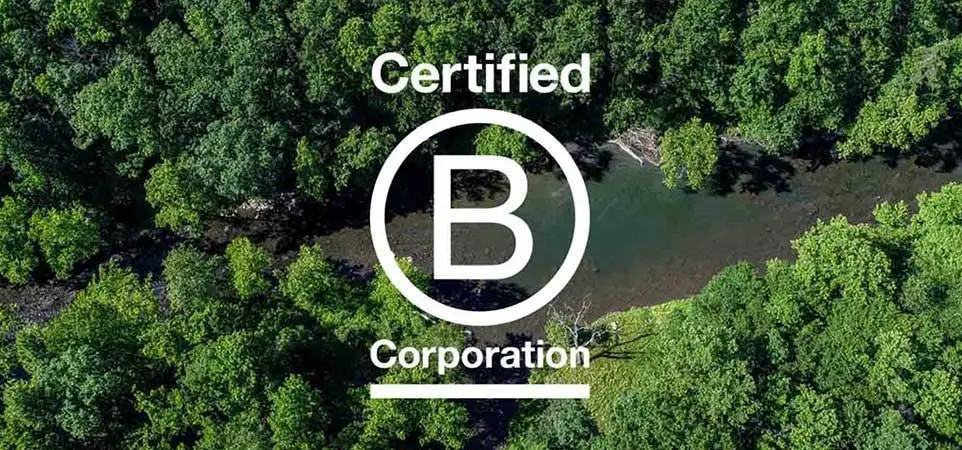Index
- Market context 1 &2
- Sustainable awareness
- Label brands versus certifications
- Organization of the label brand
- Labels, an international jungle
- Swiss labels
- Two main categories of label
- Label by industry versus territorial label 1&2
- Multi-labeling
- Key success factors for B-Corp
- Conditions for the success of a territorial label
Market context
Sustainability is a megatrend that responds to market needs
Consequences
→ proliferation of hollow slogans to boost sales
→ proliferation of fuzzy labels, neither corresponding to environmentally-friendly processes/products nor legally committed
Greenwashing is a direct consequence of the success of this megatrend, therefore labels lose credibility.
And yet :
Sustainability certifications and labels embody new governance models for companies, society and institutions.
They represent significant added value and are becoming indispensable.
To take the example of real estate, it is generally considered that a property that is not properly energy-efficient loses an average of 30% of its value.
Sustainable awareness
Labels are the result of a certification process, or at least a set of criteria to be met, and are an opportunity to raise awareness.
The notion of the global and individual responsibility of each organization and human being is put back at the center of all attention.
Every action taken has an impact on the overall system, and it is no longer possible to pass the buck to subcontractors or other stakeholders.
The organization’s commitment is global.
It’s a holistic approach to improvement, designed to make organizations more transparent, efficient and dynamic.
Labels & certifications
Certification is a long-term quality approach involving an improvement process that is generally renewed every two or three years .
A label is a registered trademark, a stamp confirming that an organization complies with precise and specific criteria

A label corresponds to a legal commitment
- Either a warranty trademark duly registered, including the certification criteria for obtaining the label.
- Or, as a minimum, a combined Trademark duly registered in the trademark register, accompanied by a list of criteria or a program to be followed in order to obtain the label.
Organization of the label brand
- The certification body is independent of the awarding body of the label
- The combined trademark allows both activities to be carried out under a single legal entity

Max Haavelar Foundation awards the label to companies/products

Certification body for the Max Havelaar Fairtrade label
LABELS →INTERNATIONALE JUNGLE
- Over 200 internationally recognized “label brands” coexist.
- 25% of them are contested in terms of sustainability
- 70% of the thousands of local and international labels are unprofessional, environmentally unfriendly or simply greenwashing
*https://www.sustainablejungle.com/certifications/sustainability-certifications/
Swiss labels
Switzerland has288 labels a figure that is constantly rising

TWO MAIN LABEL CATEGORIES
Label by trade / industry

Usually developed by trade/industry associations to collectively defend a commitment to quality, sustainability, etc.
The BIO SUISSE label was developed by the Federation of Swiss Agricultural Enterprises that have been awarded the bud (are certified).
Territorial label – registered brand

Regional labels are developing, usually with the support of institutions such as chambers of commerce, economic and agricultural promotion bodies, etc.
Regional labels offer the advantage of rapidly fostering the commitment of a community of collective and territorial interest, as well as giving the label “institutional credibility”.
Organization of the label brand
Att ! However, the proliferation of cantonal labels and/or brands in Switzerland
We are witnessing a proliferation of cantonal labels, not all of which comply with intellectual property rules, which could pose a problem of credibility.
*Without going so far as to imagine the development of a legal regime specifically designed for territorial brands and all brands linked to territories, it would be advisable to consider ways of facilitating the management of related legal issues.
While increasing labelling shows that we are on the right track towards fairer trade, it is the proliferation of this multi-labelling that is becoming counter-productive and losing credibility and visibility
*https://www.unil.ch/files/live/sites/cedidac/files/Bulletins/Bulletin_no_66.pdf

KEY SUCCESS FACTORS FOR B-CORP
Drawing inspiration from the best A brand is a living organ that evolves over time and needs to be kept alive.
- The most visible brand
- The most universal brand
- The most credible brand
- The most powerful network
- The most involved community

CONDITIONS FOR SUCCESS OF A TERRITORIAL LABEL
- A well-positioned brand with objectives, mission, values and scope of action
- The definition of benefits for its members → What’s in it for me?
- A clearly defined strategy with objectives to be achieved and the resulting action plan
- Fully transparent communication
- A duly registered guarantee Trademark
- One or more certification bodies, provided that their evaluation criteria are identical and integrate the criteria for the region, canton


Other articles
How brands get teenagers hooked!
Interview by Bilan – Chantal Baer
Brand expert Chantal Baer tells you what's behind teenagers' spending sprees.
Positioning, the ABCs of branding
We are living in the age of an intimate relationship with the brand, which will henceforth provide individuals with points of reference for their identity.
The brand is the strategic and conceptual concentration of your activity expressed through a universe of meaning that evokes an emotion.

